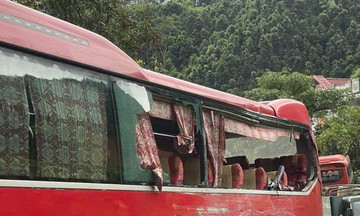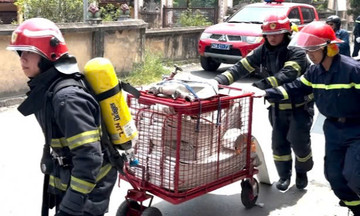The road to independence
Leader Nguyen Ai Quoc, in his 1942 historical poem "Our Nation's History," under the section "Important Years," wrote, "1945 - Vietnam independent." Many at the time doubted this prediction. However, over three years later, on 2/9/1945, the Democratic Republic of Vietnam was born after 15 days of nationwide general uprising that seized power.
The path to independence involved seven decades of struggle against French colonialism, starting with the invasion and bombardment of Da Nang on 1/9/1858. Numerous uprisings, driven by various motivations but united by patriotism, ultimately failed to achieve complete victory.
"All patriotic uprisings were drowned in blood," President Ho Chi Minh later summarized, describing those decades as "dark as if there were no way out."
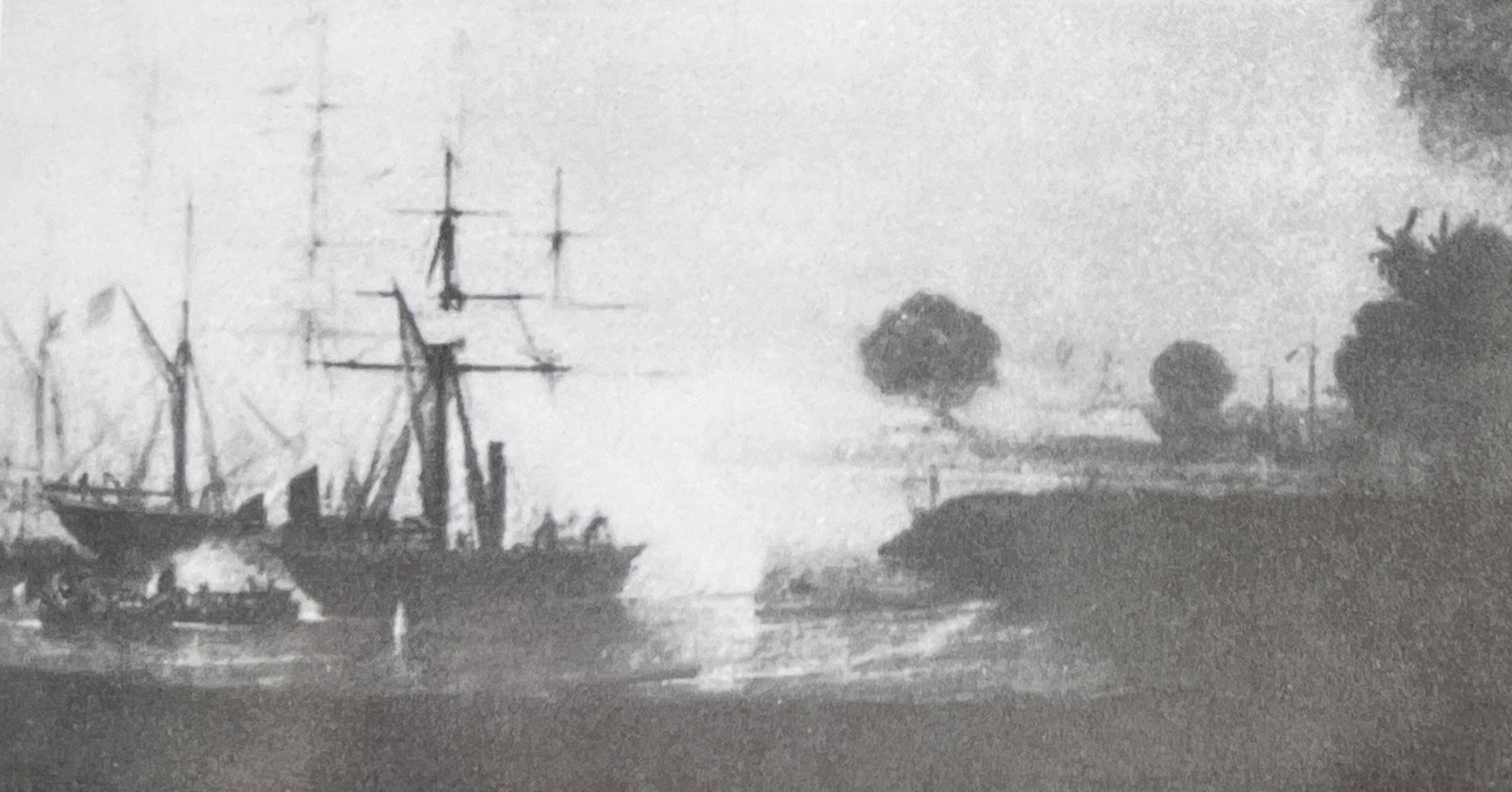 |
French warships bombard Da Nang on 1/9/1858, marking the beginning of the invasion of Vietnam. Source: Provided |
French warships bombard Da Nang on 1/9/1858, marking the beginning of the invasion of Vietnam. Source: Provided
The first military and political rehearsals
The Communist Party of Vietnam was formed through the unification of three communist organizations in Hong Kong from 6/1 to 7/2/1930. In its initial documents, the party declared violent revolution as the only path, emphasizing the need to organize a worker-peasant army to seize and maintain power. Armed organizations began to form.
On 1/5/1930, International Workers' Day, the Central Region Committee organized a demonstration of workers and peasants in Nghe Tinh, raising red flags with hammer and sickle emblems, singing "The Internationale," and chanting slogans for tax reductions, shorter working hours, and higher wages. The demonstration ended in a hail of bullets, signaling that "the struggle in Annam has reached a decisive day."
Like a domino effect, throughout May, workers in factories in Vinh and Ben Thuy went on strike, demanding higher wages and reduced working hours. Peasants protested for tax deferrals. Throughout September and October 1930, Nghe Tinh was shaken by demonstrations and rallies led by the Central Region Committee. As the French and local feudal apparatus became paralyzed, Soviets (elected administrative committees) formed in numerous villages, directly managing all aspects of life.
The unprepared seizure of power meant the Nghe Tinh Soviets lasted only a few months before being suppressed. However, this uprising is seen as the first "military rehearsal" since the Communist Party’s formation, providing valuable lessons about worker-peasant alliances, mobilizing the masses for armed struggle, and seizing and maintaining power.
"Cung nhau di hong binh" (Together we go, red soldiers), a song composed by Dinh Nhu in Hoa Lo prison at the age of 20, resonated during the Nghe Tinh Soviets and again 15 years later during the general uprising.
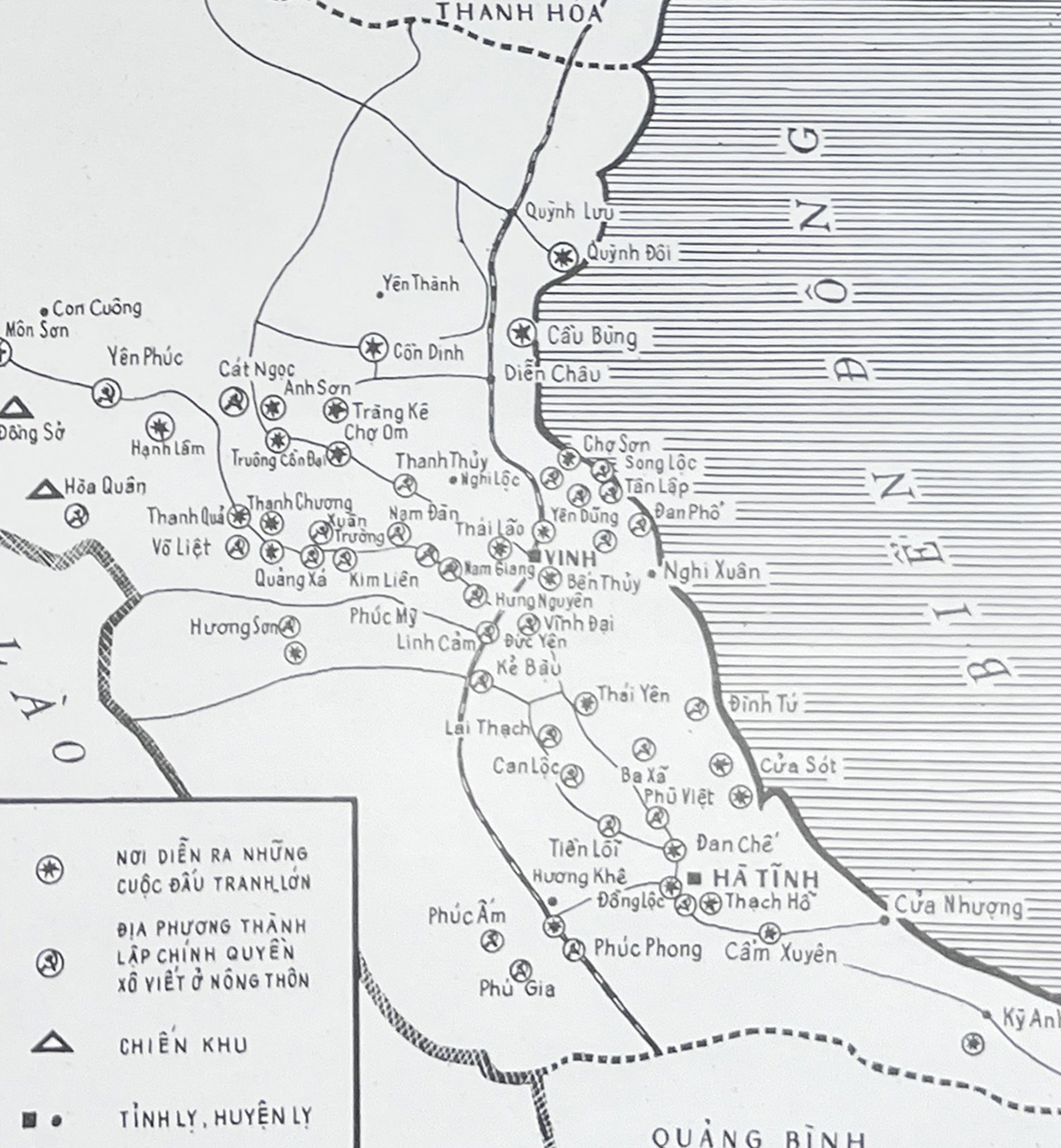 |
The Nghe Tinh Soviets uprising, 1930-1931. Source: Provided |
The Nghe Tinh Soviets uprising, 1930-1931. Source: Provided
The formation of the Berlin-Rome-Tokyo Axis in the 1930s pushed the world towards World War II. Following the Seventh Congress of the Communist International in 1935 in the Soviet Union, the Party's July 1936 conference prioritized demands for freedom, livelihood, democracy, food, clothing, and peace, while maintaining the strategic goal of opposing imperialism and feudalism. The forms of struggle shifted from overt to a mix of overt and covert, legal and illegal.
Life in Indochina during these years was chaotic following the 1929-1933 economic crisis. As a French parliamentary delegation prepared to investigate the colonial situation, the Indochinese Communist Party encouraged people to voice their desires for improved living conditions. The Indochinese Congress movement attracted various social strata, all demanding livelihood and democratic rights. The authorities conceded some rights and improved working and living conditions.
If the Nghe Tinh Soviets were the first military rehearsal, the movement for freedom, democracy, livelihood, and peace from 1936 to 1939 was the second political rehearsal, preparing for the 1945 general uprising.
The top priority: national liberation
After 1939, democratic struggle became untenable. The party's publications were banned, and officials were arrested. Secret police watched the homes of cadres exposed during the semi-public period of activity. All organizations went underground. Vo Nguyen Giap, Pham Van Dong, and others followed orders to "find a way to cross the border into China."
Over 60 days after the outbreak of World War II, the Party's 6th Central Committee Conference in November 1939 identified national liberation as the top priority in this new context. This strategic shift, shaped through the 6th and 7th Central Committee Conferences, was finalized at the 8th Conference in May 1941, after Japanese forces entered Indochina. Without national liberation and independence, class interests could never be achieved.
With the outbreak of the Pacific War in late 1942, the shifting balance of power between the Allies and the Axis powers raised the possibility of Allied troops landing in Indochina to fight the Japanese. The Party declared, "Do not have illusions that the Chinese (Chiang Kai-shek's forces), British, or American troops will bring us freedom. Of course, we must seek allies, even if temporarily, precariously, and conditionally, but our work, first and foremost, we must do ourselves."
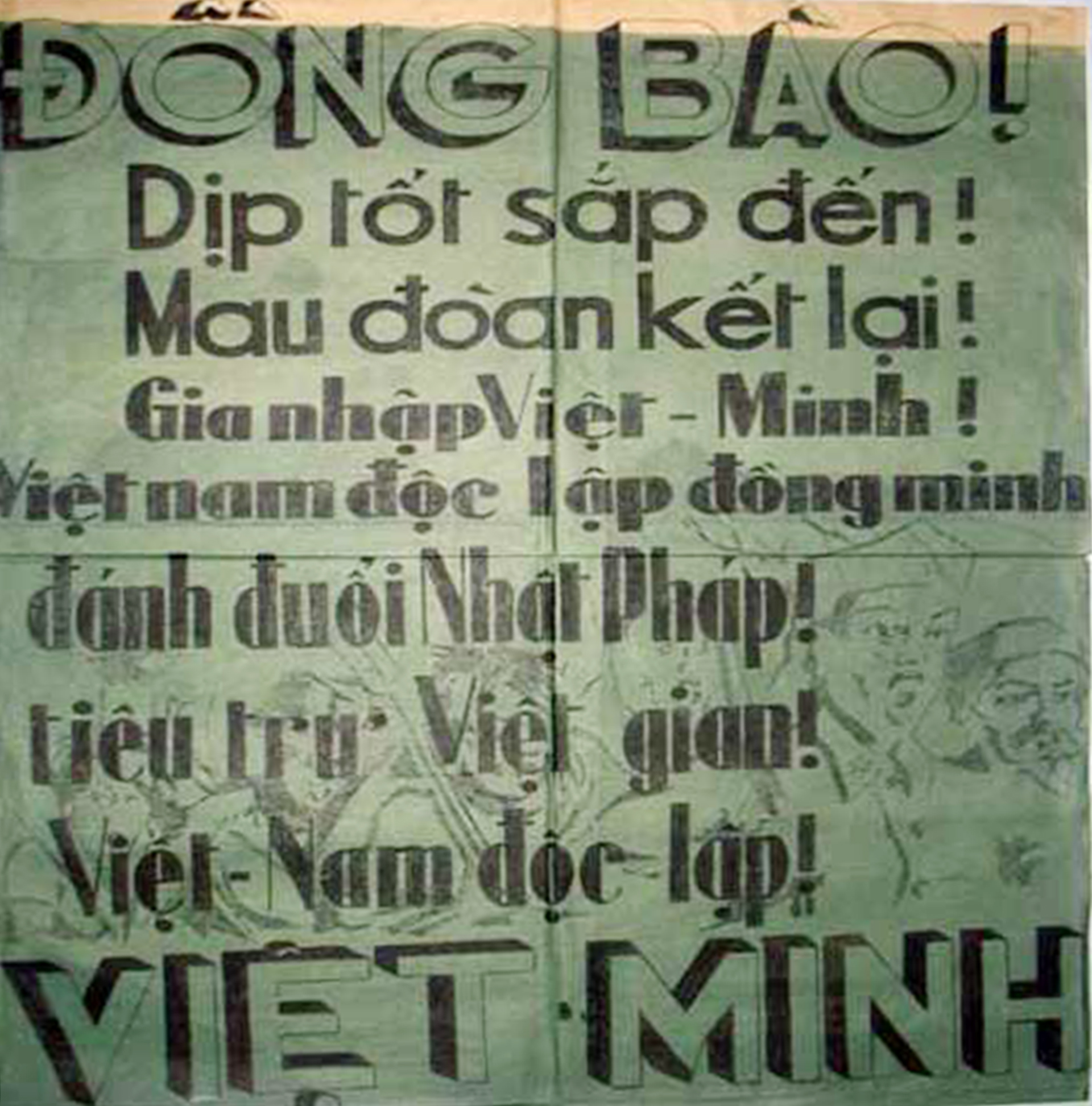 |
Viet Minh slogans call on compatriots to join the united front to fight the French and expel the Japanese. Source: Provided |
Viet Minh slogans call on compatriots to join the united front to fight the French and expel the Japanese. Source: Provided
The 8th Central Committee Conference decided to establish the Vietnam Independence League, or Viet Minh, on 19/5/1941. The front adopted the red flag with a five-pointed gold star as its symbol, uniting the people to "fight the French, expel the Japanese, and achieve complete independence for Vietnam."
In fact, Nguyen Ai Quoc, since 1940 while in Guilin, China, had been considering forming a national united front. He pondered various names, seeking one that would resonate with the people: "Vietnam Liberation League? Vietnam Anti-Imperialist League? or Vietnam Independence League?" These ideas were eventually discussed and realized with the Viet Minh's establishment.
By mid-1942, the Cao Bang base area connected with Bac Son - Vo Nhai, establishing communication between the Central Committee at the base and the Standing Committee in the lowlands. Cao Bang - Thai Nguyen - Lang Son - Tuyen Quang formed a political corridor. In May 1945, Ho Chi Minh and key associates moved from Pac Bo (Cao Bang) to Tan Trao (Tuyen Quang) to join the Party Central Committee in leading the general uprising.
The first main force army is born
In the summer of 1944, plans for launching guerrilla warfare in the Cao - Bac - Lang region were drafted and ready. This plan was postponed when Ho Chi Minh returned from China to the Cao Bang border region in September 1944 and reassessed the situation. The Central Committee recognized the new plan's limited scope, focusing on the three provinces of Cao - Bac - Lang while other areas were not yet prepared.
Ho Chi Minh determined that the period of peaceful revolution had passed, but the stage of armed uprising had not yet arrived. Political activity alone was insufficient to advance the movement, and launching an uprising would invite immediate suppression. The struggle needed to transition from political to military, but with politics taking precedence.
Under the Tran Hung Dao forest canopy on 22/12/1944, Vo Nguyen Giap was tasked with establishing the Vietnam Propaganda Liberation Army, the first main force army to serve as the core for a nationwide uprising.
This army shouldered the responsibility of "pioneering the path to national liberation," guided by the principle of "politics over military, propaganda over combat," using armed propaganda to mobilize the entire population and prepare the political and military groundwork for the future uprising.
Three days after its formation, the 34-member army overran the Phay Khat and Na Ngan outposts in Cao Bang, establishing its reputation and initiating the "victorious first battle" tradition of the Vietnam People's Army.
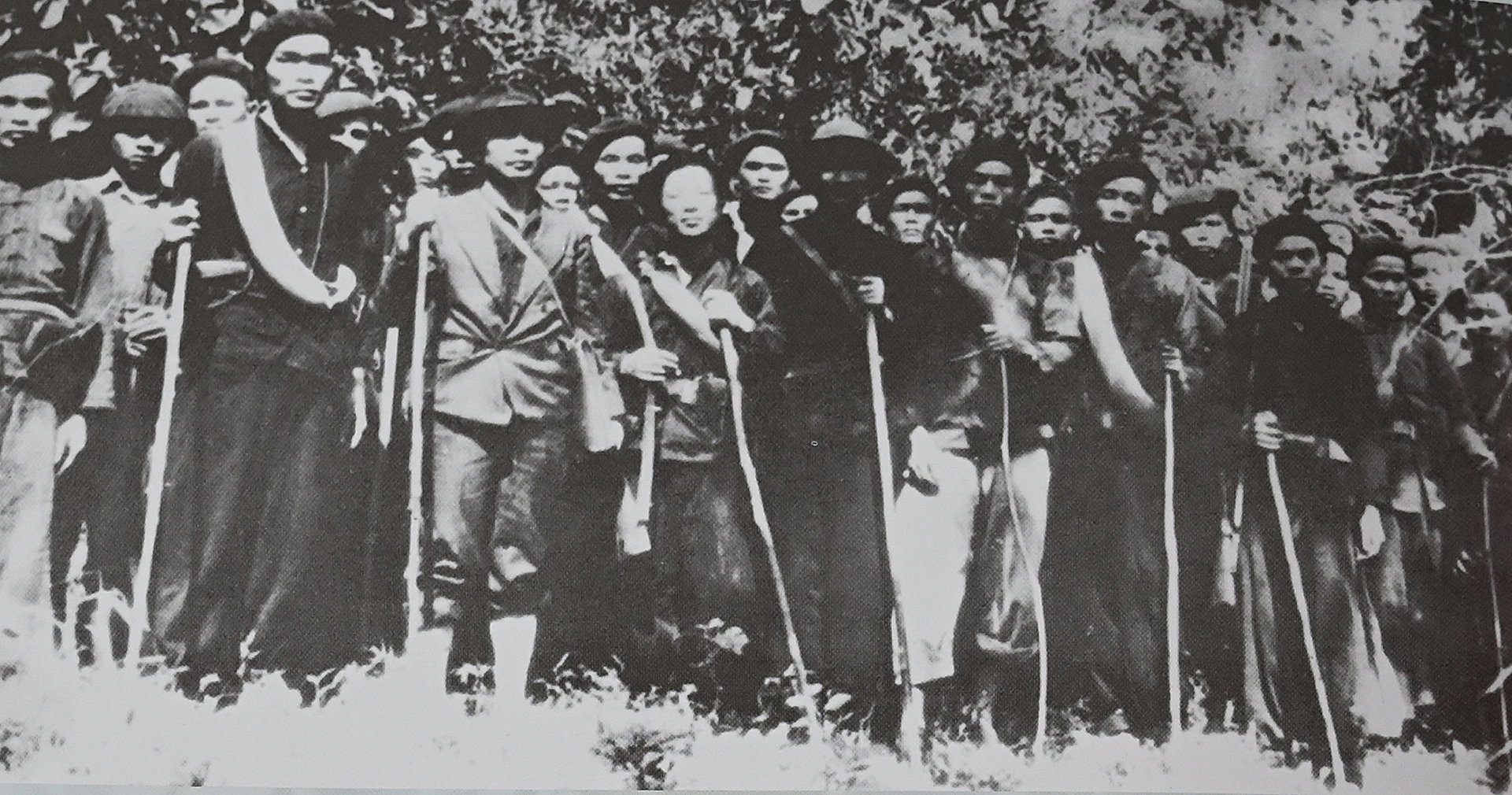 |
Vo Nguyen Giap (in suit) and the first 34 members of the Vietnam Propaganda Liberation Army, the precursor to the Vietnam People's Army, December 1944. Source: Provided |
Vo Nguyen Giap (in suit) and the first 34 members of the Vietnam Propaganda Liberation Army, the precursor to the Vietnam People's Army, December 1944. Source: Provided
Resistance against Japan to save the nation
World War II neared its end when, on 30/4/1945, the Soviet Red Army raised its flag over the German Reichstag. Hitler committed suicide. On 8/5/1945, Germany signed the unconditional surrender document to the Soviet Union and the Allies. World War II concluded in Europe.
At the Yalta Conference in the Soviet Union, Indochina emerged as a significant issue for the major powers, both in terms of defeating Japan and establishing a new world order. The US favored international trusteeship, while Britain wanted to return Indochina to France. The Soviet Union advocated replacing the old colonial regime with a more liberal one.
However, in Indochina, Japan, facing its own demise, ousted the French in a coup on the night of 9/3/1945. The Japanese coup against the French coincided with the expanded meeting of the Party Central Committee's Standing Board in Bac Ninh, about 30 km from Hanoi.
"The Japanese-French clash and our actions" was the directive drafted and widely disseminated by the Party Central Committee just three days after the coup. The slogan "expel the Japanese fascists," replacing "expel the Japanese and French," in the Resistance against Japan to save the nation movement created momentum for the general uprising.
The Tonkin Military Conference in April 1945, after assessing the European theater, determined it was time to launch guerrilla warfare leading to a general uprising. A national congress, encompassing various groups, parties, and dignitaries, would be convened to establish the Vietnam National Liberation Committee and a provisional government.
The wave of partial uprisings during the Resistance against Japan spread from the northern delta to central Vietnam. "With extreme indignation, the people have risen up. The revolution cannot proceed step by step. The urgent situation demands a fundamental change," Vo Nguyen Giap observed.
The liberated zone, encompassing six provinces (Cao - Bac - Lang - Ha - Tuyen - Thai), with Tan Trao as its "capital," was established in June 1945. The implementation of the Viet Minh's 10 policies, including "universal suffrage and democratic freedoms" for over one million people, signaled the birth of a "new Vietnam," with a portion of northern Vietnam effectively under revolutionary control.
 |
Units 3 and 4 of the Vietnam Liberation Army hold a departure ceremony in Tan Trao, 16/8/1945. Source: Provided |
Units 3 and 4 of the Vietnam Liberation Army hold a departure ceremony in Tan Trao, 16/8/1945. Source: Provided
'The hour of general uprising has struck!'
As the Resistance against Japan surged from north to south, in Tan Trao starting in July, Ho Chi Minh urged preparations for two national party conferences and a national congress, advocating for meetings even if some delegates couldn't arrive in time, "otherwise we won't keep pace with the general situation."
Amidst the intense activity, Ho Chi Minh suffered from fever for several days but continued working to the point of delirium. One night, after the fever subsided, he told Vo Nguyen Giap, "The opportune moment has arrived; no matter the sacrifice, even if we have to burn down the entire Truong Son range, we must resolutely seize independence."
With delegates still gathering, the Central Committee and the Viet Minh General Committee decided they could wait no longer. The window of opportunity to seize power was only about 15 days, from the Soviet Union's official entry into the war against Japan until the arrival of Allied forces in Indochina.
On 13/8/1945, the Central Committee received news of Japan's cessation of hostilities and surrender to the Allies. The nation's destiny faced a momentous opportunity. The order for a general uprising for the entire population and army was issued at 11 PM that same day.
The Party's National Conference immediately convened on the morning of 14/8, deciding to launch the general uprising to seize power before Allied forces entered Indochina. The National Congress, held on 16/8 and 17/8 in Tan Trao, approved the decision for a general uprising and the Viet Minh's 10 major policies.
"The hour of general uprising has struck! This is a unique opportunity for the Vietnamese army and people to rise up and seize independence for our nation," declared Military Order Number 1 of the Uprising Committee, drafted by Tran Huy Lieu.
The Vietnam National Liberation Committee was formed, later becoming the Provisional Government of the Democratic Republic of Vietnam, with Ho Chi Minh as President. For the first time since his return, Ho Chi Minh appeared before national delegates from all three regions.
The atmosphere during the August 1945 general uprising. Source: Video Archives
Over 20 million Vietnamese, imbued with the spirit of "our strength liberates us," rose up in unison from 14/8 to 28/8/1945, seizing power, establishing a democratic republic, and ending nearly a century of French colonialism and thousands of years of feudalism. Fifteen years of preparation culminated in 15 days of seizing power when the golden opportunity arrived.
On 2/9/1945, President Ho Chi Minh read the Declaration of Independence at Ba Dinh Square in Hanoi. At that moment, on the battleship Missouri anchored in Tokyo Bay, Japan officially signed the surrender documents to the Allied forces.
Earlier, at the Potsdam Conference in late July 1945, the Allies decided to divide Indochina into two zones for the purpose of disarming the Japanese forces upon their surrender. The area south of the 16th parallel was assigned to British forces, while the area north of the 16th parallel fell under the responsibility of Chiang Kai-shek's forces. France was excluded due to pressure from the US, which sought to replace France in Indochina. The Vietnamese people were not consulted on this crucial matter.
However, with the birth of the Democratic Republic of Vietnam, the Vietnamese people possessed the political and legal foundation, as "masters of their own destiny," to welcome the Allied forces for the disarmament of the Japanese.
"Swift. Timely. Erupting at the precise moment it had to" became the hallmark of the August Revolution. As foreign scholars have noted, 1945, along with 1975, marked major turning points, signifying the beginning and end of a long period of war and social transformation.
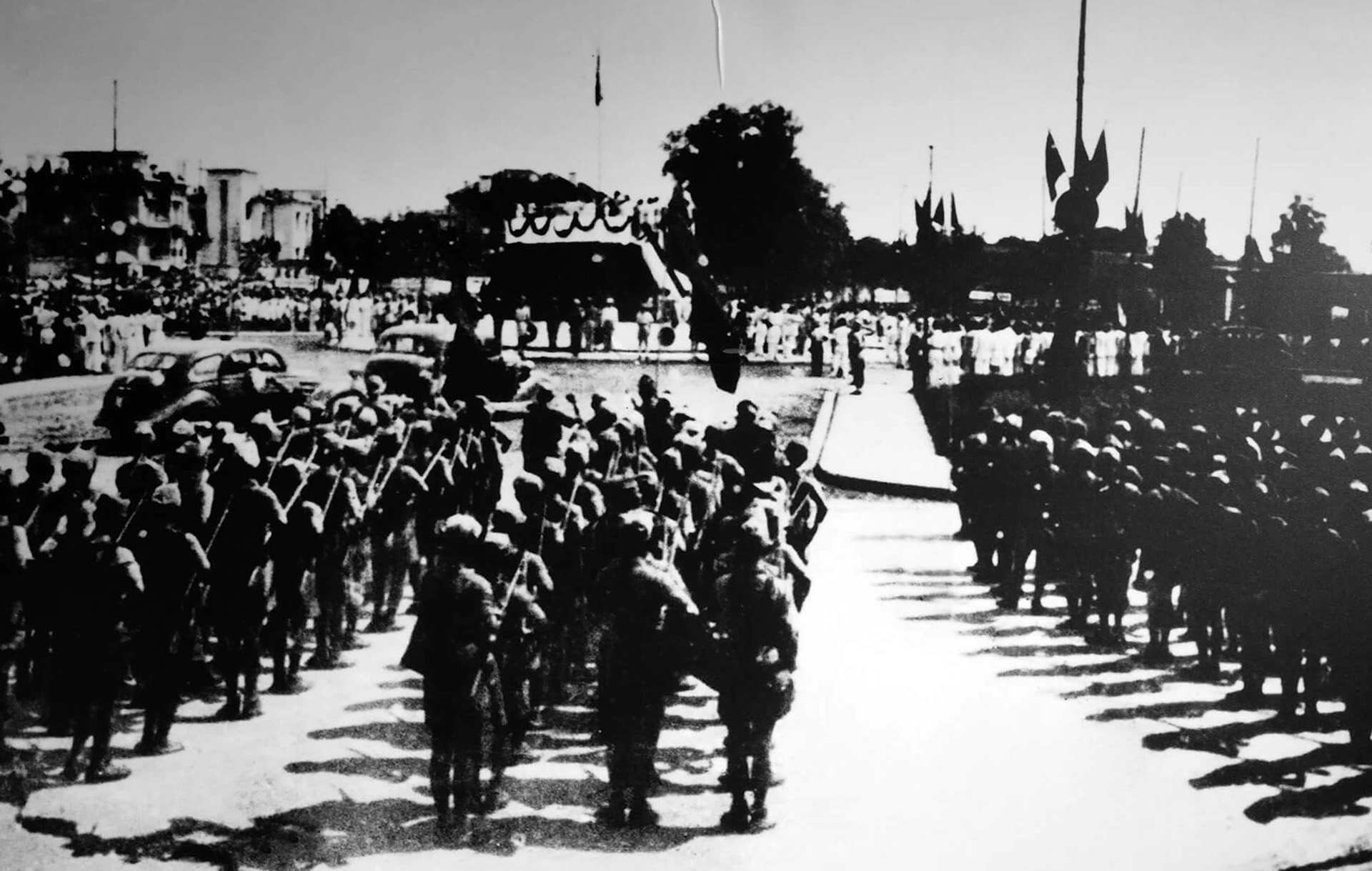 |
The atmosphere during the August 1945 general uprising. Source: Video Archives |
Ba Dinh Square on 2/9/1945. Source: Provided
Hong Chieu
References:
- General Vo Nguyen Giap - Complete Memoirs, People's Army Publishing House 2018
- The August Revolution 1945: The First Great Victory of the Vietnamese Nation in the 20th Century, Ho Chi Minh City General Publishing House
- Materials from Colonel Tran Ngoc Long, former Deputy Director of the Vietnam Military History Institute
- Photo Book of the Vietnam People's Army: 80 Years of Building, Fighting, and Growing (1944-2024); Vietnam Military History Museum









